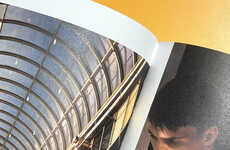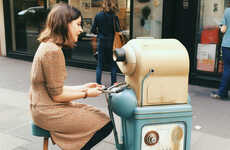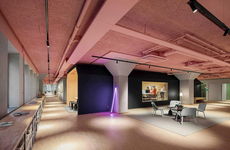
The Factory Photographs by David Lynch is Moodily Otherworldly
Meghan Young — January 31, 2014 — Fashion
References: davidlynch & fastcodesign
The Factory Photographs series is chock full of haunting black and white images of abandoned factories. Shot by the incomparable American director David Lynch, who is known for his movie 'Mulholland Drive' and his television series 'Twin Peaks,' the images are much more steeped in reality than his typically surrealist worlds on film. Yet there is a moody ominous feeling throughout The Factory Photographs series that does give it mystical properties.
His first book of photography, The Factory Photographs series is currently on view at The Photographers’ Gallery in London, England. The images were captured between the years of 1980 and 2000 in Berlin, Poland, New York, New Jersey and England. Curator Petra Giloy-Hirtz tells Fast Co. Design, “These photographs have such an amazing resonance--an otherworldly wasteland atmosphere, a dreamy kind of mood."
His first book of photography, The Factory Photographs series is currently on view at The Photographers’ Gallery in London, England. The images were captured between the years of 1980 and 2000 in Berlin, Poland, New York, New Jersey and England. Curator Petra Giloy-Hirtz tells Fast Co. Design, “These photographs have such an amazing resonance--an otherworldly wasteland atmosphere, a dreamy kind of mood."
Trend Themes
1. Abandoned Factory Tourism - The haunting images of abandoned factories by David Lynch could inspire a new trend of industrial tourism for people seeking spooky and atmospheric destinations.
2. Industrial Decay Photography - The Factory Photographs series highlights the beauty in industrial decay, presenting a trend of photographing and appreciating abandoned buildings that could lead to new business opportunities for photographers.
3. Post-industrial Realism - David Lynch's The Factory Photographs series is a striking example of the current trend of post-industrial realism in the arts, which could create opportunities for artists and galleries to showcase these types of works.
Industry Implications
1. Tourism - The trend of abandoned factory tourism could bring new revenue streams to rural areas where these industrial sites are located.
2. Photography - The trend of industrial decay photography could create opportunities for photographers to sell prints or offer guided tours of abandoned factory locations and share their knowledge and techniques with others.
3. Fine Art - The trend of post-industrial realism in the arts could lead to new opportunities for galleries, curators, and artists to create exhibitions and artworks that highlight the beauty, history, and decay of industrial buildings.
2.3
Score
Popularity
Activity
Freshness























